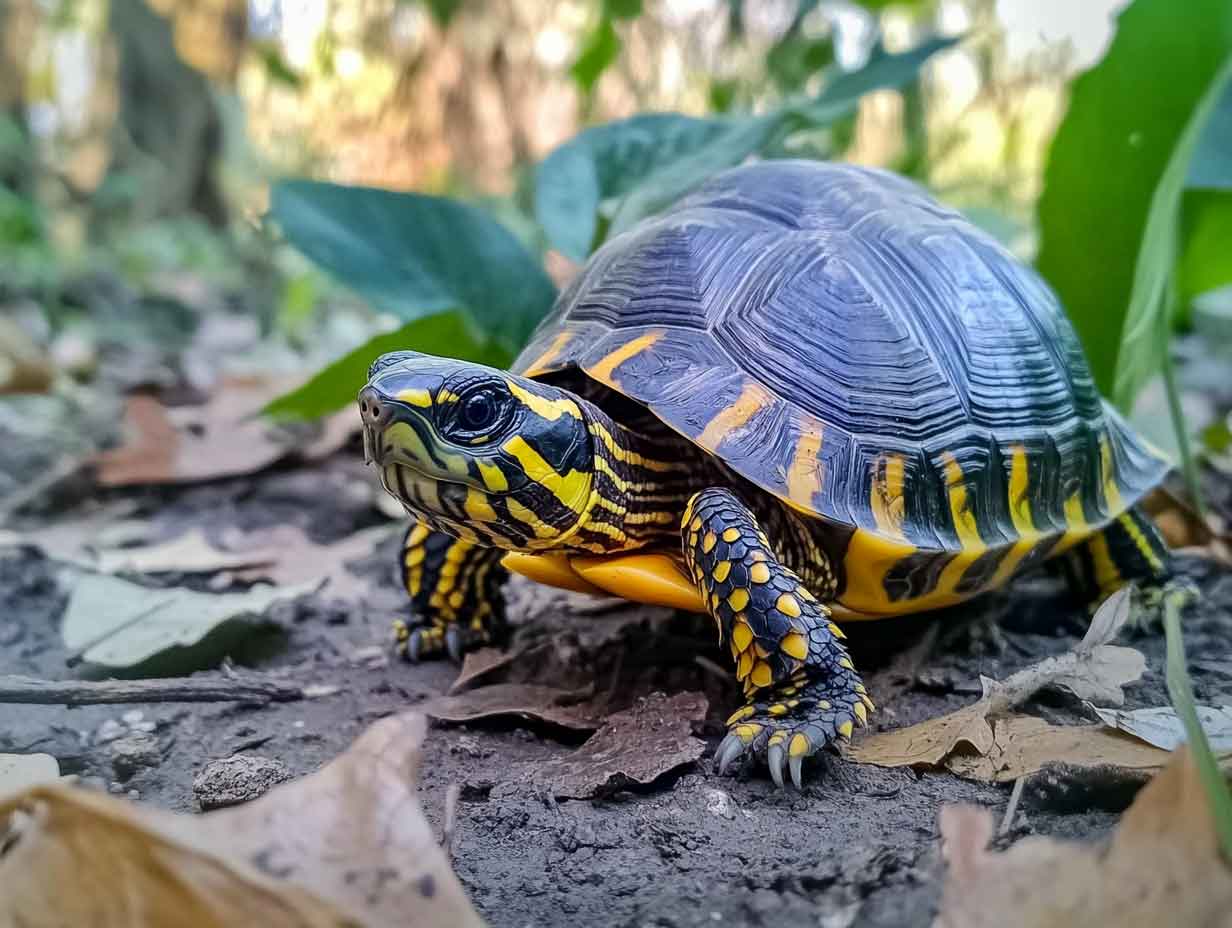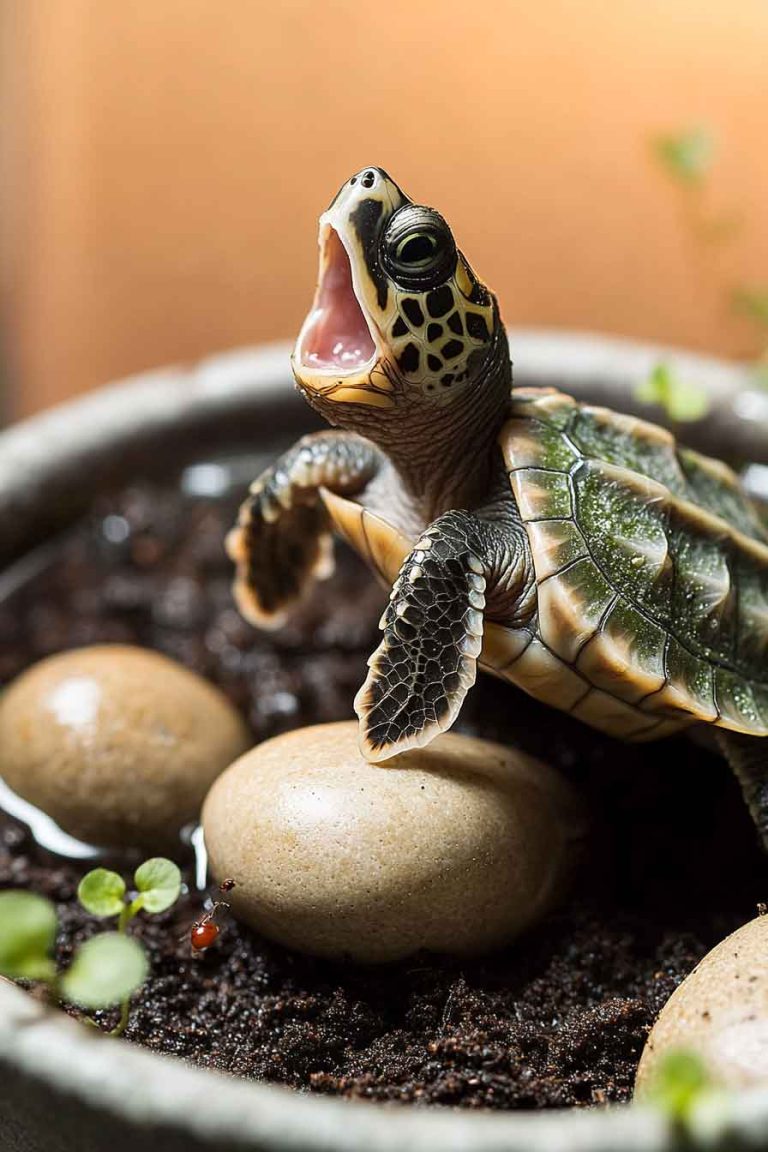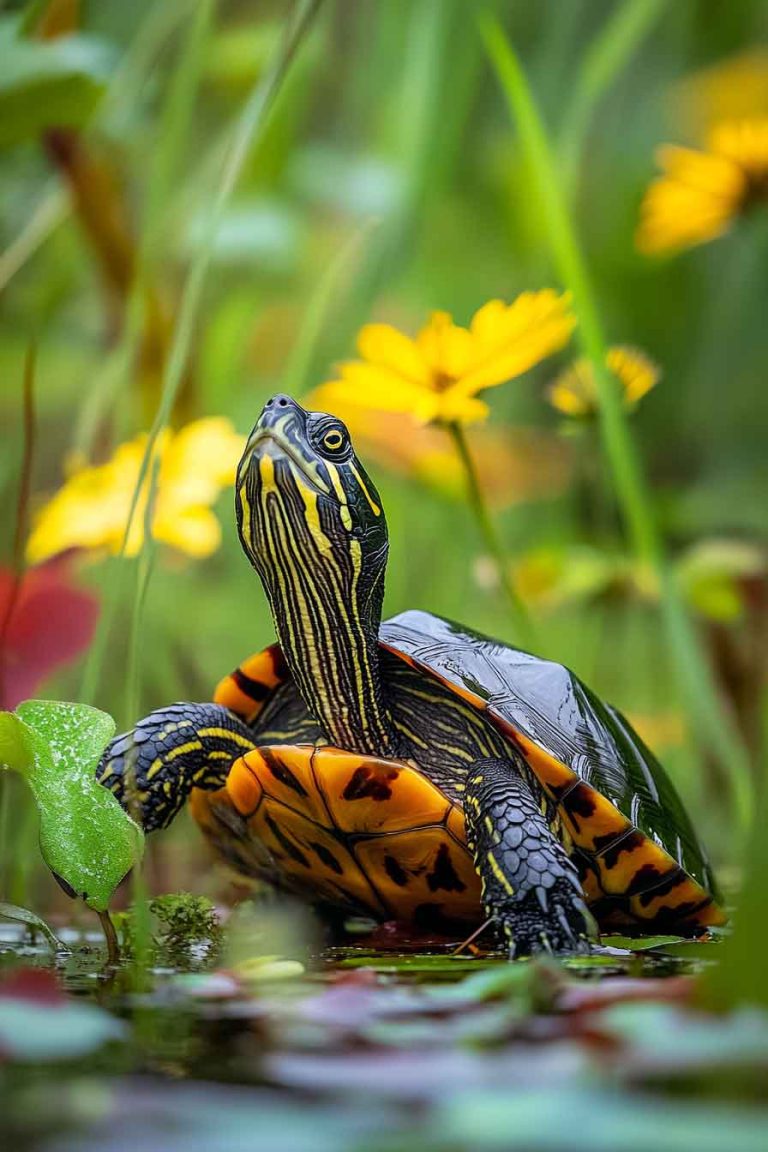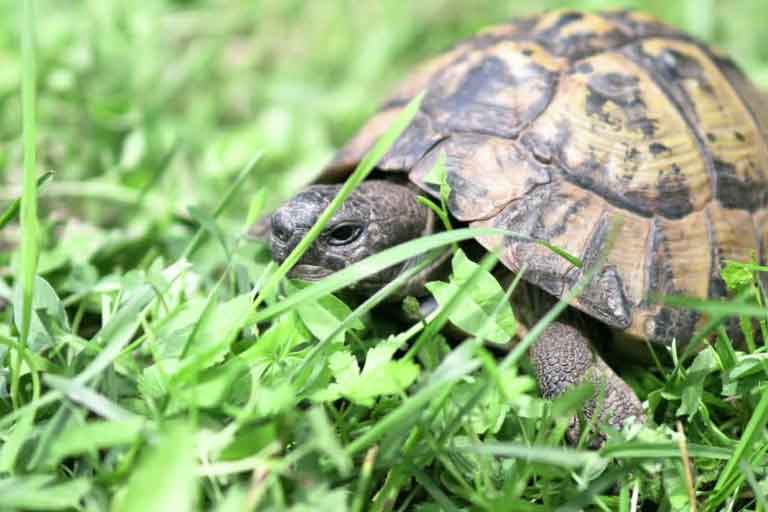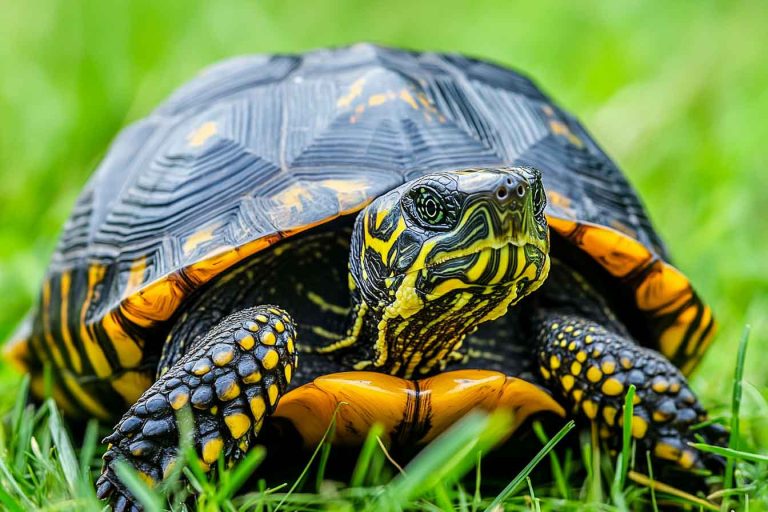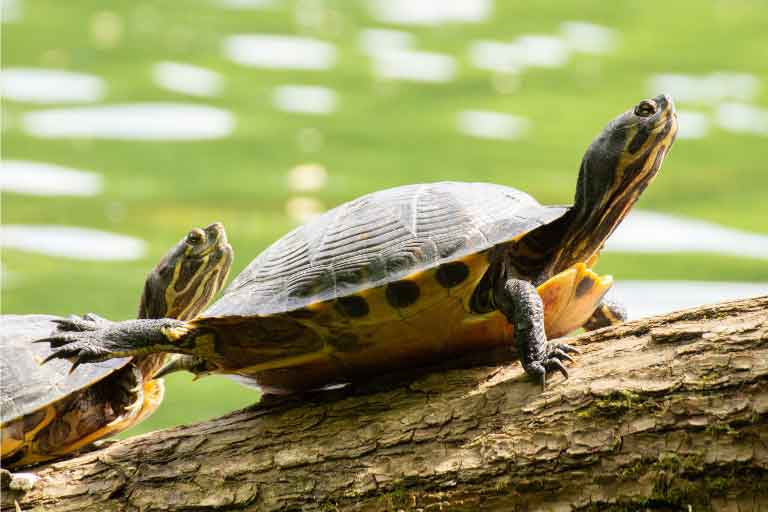Why Is My Turtle Always Basking? | Causes, Health Tips & Easy Fixes
I’ve lived with turtles long enough to know that they’re full of surprises. They don’t bark or purr, but they have their own little ways of showing you when something’s not quite right. One of the strangest behaviors I’ve noticed—one that freaked me out early on—was when my turtle suddenly started basking all the time….
I’ve lived with turtles long enough to know that they’re full of surprises. They don’t bark or purr, but they have their own little ways of showing you when something’s not quite right. One of the strangest behaviors I’ve noticed—one that freaked me out early on—was when my turtle suddenly started basking all the time. Like, not “he loves his dock” basking, but “he basically lives up there now” basking.
That’s when I realized: turtles don’t just do things randomly. If your turtle is spending hours and hours basking, avoiding the water, or even skipping meals, it’s often a clue that something in their world is off. It’s their version of waving a red flag.
In this post, I’m going to walk you through everything I’ve learned—from personal trial and error, long talks with reptile vets, and years of observing my shelled companion. We’ll go deep into why your turtle might be basking excessively, how to tell when it’s normal and when it’s not, and what you can do to fix it.
Understanding Normal Basking Behavior
Before we assume there’s a problem, let’s define what’s normal for a basking turtle. Most aquatic turtles (like red-eared sliders, painted turtles, and cooters) spend a good chunk of their day basking. It’s how they warm their bodies, metabolize food, and absorb UVB light to maintain strong shells and bones.
Here’s what healthy basking behavior usually looks like:
- Your turtle climbs onto the dock once or twice a day.
- Basking lasts 15–60 minutes per session.
- They return to the water afterward to swim, explore, and eat.
- Their shell dries completely during basking.
But when things start to look like this:
- Your turtle spends most of the day out of the water.
- They refuse to go back in, even to eat.
- They bask for hours without taking breaks.
- They show signs of stress or lethargy in the water…
That’s when it’s time to investigate.
Reason 1: The Water Is Too Cold
This is probably the most common—and the first thing I always check. Turtles need both water and basking zones to stay within specific temperature ranges. If the water drops below the ideal temperature, your turtle will avoid it and stay on the dock to stay warm.
Why it happens:
- Heater malfunction or incorrect setup
- The tank is in a drafty or cold room
- The heater isn’t rated for your tank size
What I do:
I use a submersible aquarium heater and a digital thermometer to monitor water temp constantly. For most turtles:
- Water temperature should be 75–80°F for adults
- Hatchlings or sick turtles may need 80–82°F
- The basking area should stay around 85–95°F
Turtles will always gravitate toward the warmest safe place. If the water is colder than the dock, they’ll stay basking out of survival instinct.
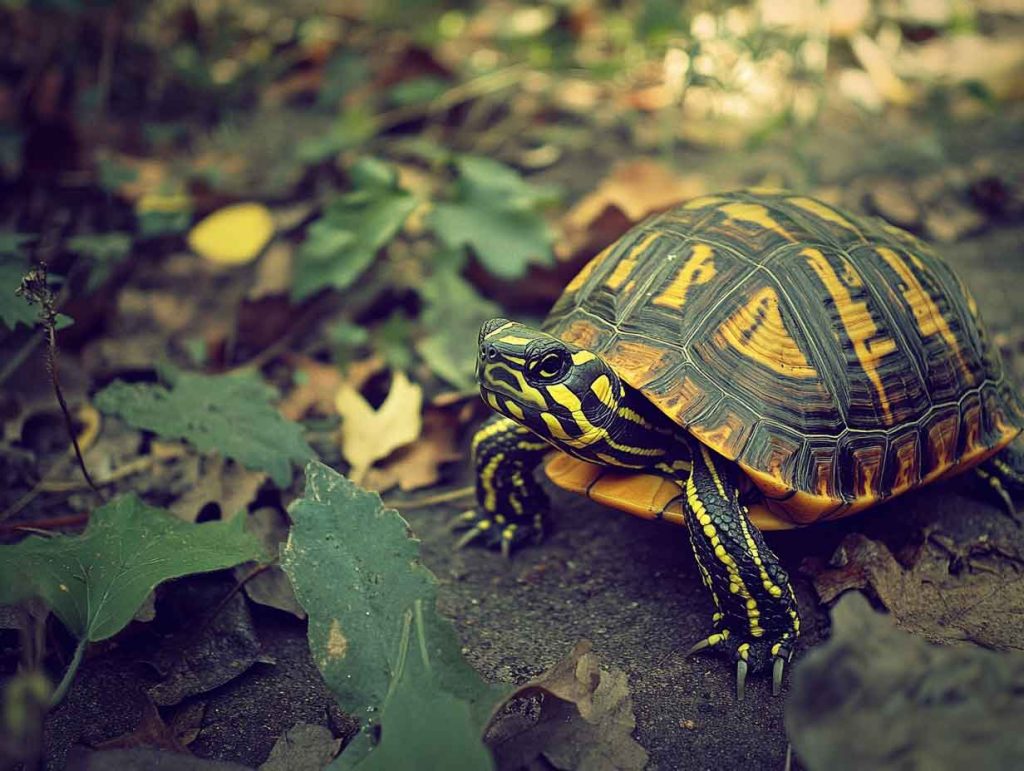
Reason 2: Poor Water Quality
This one hit me hard the first time. I’d been feeding my turtle in the tank, letting food build up at the bottom, and slacking off on filter maintenance. Before long, the water smelled off, and my turtle refused to go back in after a bask.
Turtles are sensitive to changes in water chemistry, and if the tank smells bad or feels irritating, they’ll simply avoid it.
Signs of poor water quality:
- Cloudy water
- Foul odor
- Visible debris or uneaten food
- Algae overgrowth
- Turtle avoiding swimming or blinking excessively
My fix:
- I upgraded to a canister filter with mechanical, biological, and chemical filtration.
- I started doing 25–30% weekly water changes with dechlorinated water.
- I tested for ammonia, nitrites, and nitrates weekly using a test kit.
Just 24 hours after cleaning up the water, my turtle was back to swimming normally.
Reason 3: Shell or Skin Irritation
This is one of those cases where the turtle knows something’s wrong before we do. If your turtle has a fungal, bacterial, or parasitic infection, especially on the shell or skin, they may start basking excessively in an attempt to dry it out or relieve discomfort.
What to look for:
- White, fuzzy, or chalky patches on the shell (could indicate fungus)
- Redness around the legs or neck
- Soft spots or peeling on the shell
- Bad odor coming from the turtle
- Flaky skin that doesn’t shed normally
Why it happens:
- Poor water quality
- Lack of full drying during basking
- Insufficient UVB exposure
- Unbalanced diet
What I did when this happened:
- I gave my turtle a dry-docking period (3–4 hours out of water in a warm, quiet place) under proper lighting to allow full drying.
- I applied a vet-recommended antifungal cream (only after diagnosis).
- I added a calcium block and varied his diet with more leafy greens and cuttlebone.
- And most importantly—I improved his UVB setup, which leads us to the next point…
Reason 4: Improper UVB or Heat Lamp Setup
Your turtle might be basking excessively simply because the dock feels “too good” to leave—or because the lighting is off and their body is craving more UVB exposure.
Common lighting mistakes I made early on:
- Using a regular household bulb instead of proper UVB
- Having the UVB too far away from the dock (over 12 inches)
- Letting the bulb get old and weak (UVB output drops significantly after 6–12 months)
Correct setup checklist:
- Use a reptile-specific UVB bulb, preferably 5.0 or 10.0 depending on turtle species
- Replace bulbs every 6–12 months, even if they still light up
- Keep the basking temp at 85°F–95°F
- Use a digital infrared thermometer to test the dock’s surface
- Ensure there’s enough contrast between water and dock temperatures (5–10°F difference)
Once I upgraded to a proper dual light fixture with UVB and a halogen heat bulb, my turtle’s basking habits became more balanced—on and off, just as they should be.
Reason 5: Behavioral Triggers (Stress, Instinct, or Just Habit)
Sometimes, turtles bask more than usual because of non-physical issues. Yep—just like us, they react to change, boredom, or anxiety.
Triggers I’ve personally seen affect basking behavior:
- Tank relocation or a new environment
- Change in tank mates (another turtle, fish, etc.)
- Constant noise or motion near the tank
- New decorations or lighting that make them uneasy
- Lack of enrichment (yes, turtles get bored too)
How I helped my turtle cope:
- I created a more natural basking area with cork bark and plants to mimic the wild
- I added underwater hides and floating plants to encourage swimming
- I limited foot traffic near the tank and moved it to a calmer spot
- I kept a routine feeding and lighting schedule to give a sense of predictability
Within a week, my turtle was dividing his time again—basking, swimming, and exploring—like nothing ever happened.
What You Can Do: Step-by-Step Solutions
If your turtle is basking all the time and you’re not sure why, here’s the step-by-step checklist I personally follow when something seems off:
✅ Step 1: Check Water Temperature
Use a reliable thermometer to make sure it’s in the 75–80°F range. Adjust your heater if needed. Cold water is one of the most common causes of excessive basking.
✅ Step 2: Inspect Water Quality
Clean the tank, change 25–30% of the water, and test ammonia/nitrite levels. A dirty tank can quickly lead to stress or infections.
✅ Step 3: Examine Lighting Setup
- Replace UVB bulbs every 6–12 months
- Ensure heat bulbs keep basking area at 85–95°F
- Confirm bulb distance is correct (usually 8–12 inches from basking dock)
✅ Step 4: Look for Health Issues
Check for shell discoloration, flaky skin, or a foul smell. If anything seems off, consult a reptile vet—especially if they’re not eating or seem lethargic.
✅ Step 5: Reassess Tank Environment
- Add enrichment like driftwood, rocks, or fake plants
- Reduce external stressors (noise, pets, constant movement)
- Maintain a consistent light/feed schedule
FAQs
1. How long can a turtle bask safely?
Turtles can bask for hours each day, and it’s healthy—as long as they’re still eating, swimming, and returning to the water. If they stay dry all day and avoid the water for more than 24–48 hours, it’s time to check for issues.
2. Is too much basking bad for turtles?
Not necessarily—but what causes the over-basking might be. If they’re overbasking because of illness or a cold tank, the root problem could cause harm over time.
3. Can turtles bask under regular bulbs?
No. Turtles need UVB light—not just heat. A standard bulb might warm them up, but it won’t help with shell and bone health. Always use a reptile-specific UVB bulb.
4. What if my turtle basks and won’t eat?
This could indicate stress, illness, or poor water conditions. Always check water quality first, then lighting and temperature. If the issue persists, a vet visit is recommended.
Final Thoughts
When your turtle is basking constantly, it’s easy to get anxious. I’ve been there—watching from across the room, Googling symptoms, wondering if I missed something serious. But what I’ve learned is that turtles are actually great communicators… you just have to know how to listen.
Excessive basking is usually your turtle’s way of asking for help. Whether it’s bad water, low temps, stress, or something medical, you’ve got the tools now to figure it out. The key is to act early, observe closely, and trust your gut when something feels off.
Your turtle depends on you—and with the right care, they’ll go back to living their best basking and swimming life in no time.

